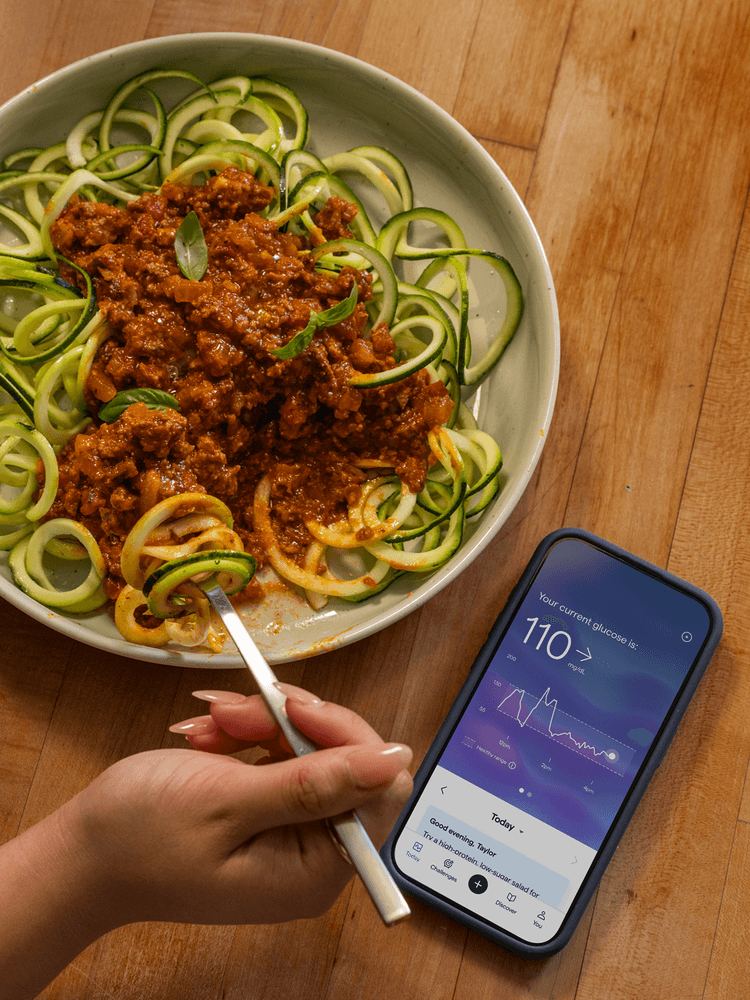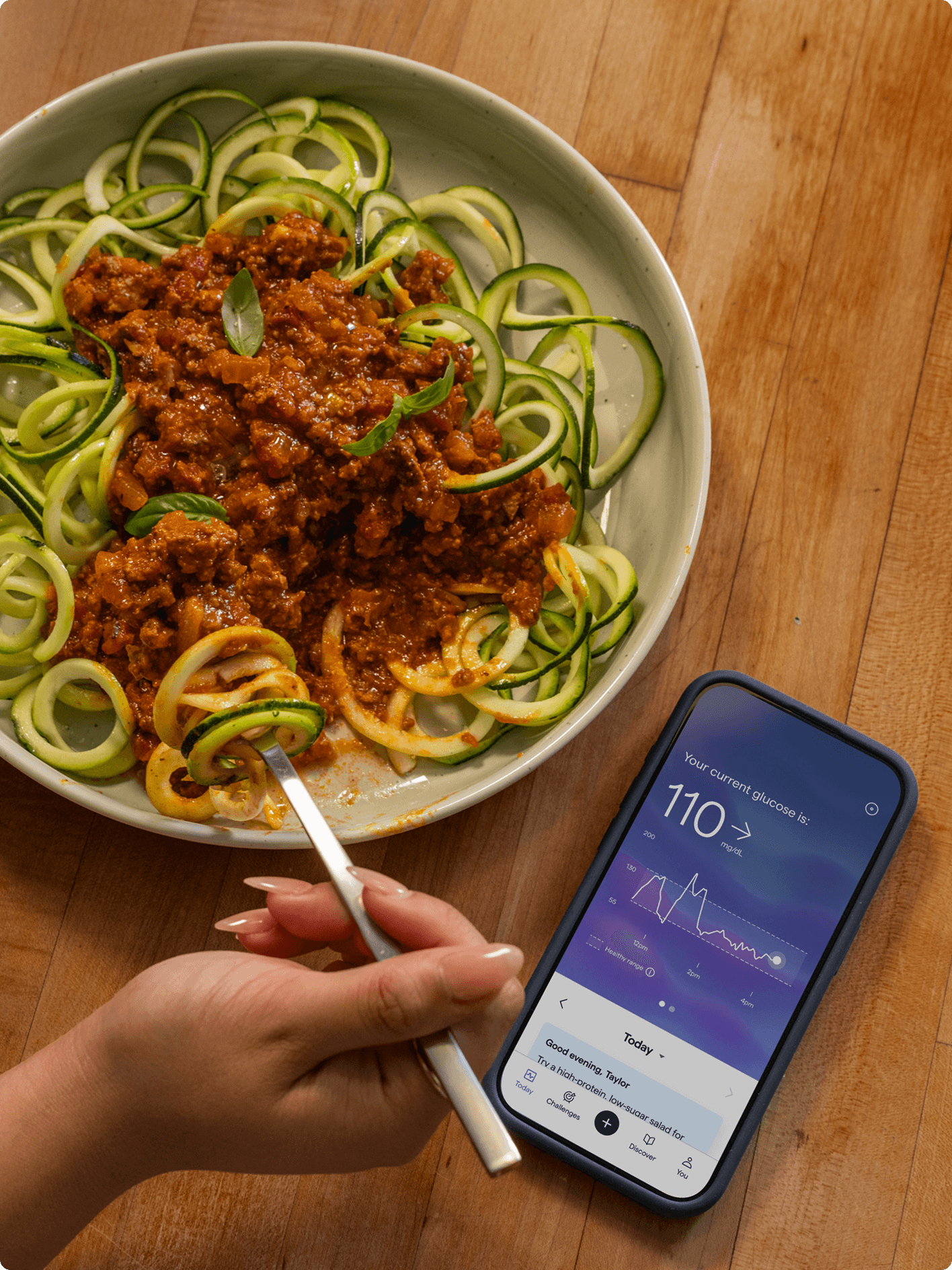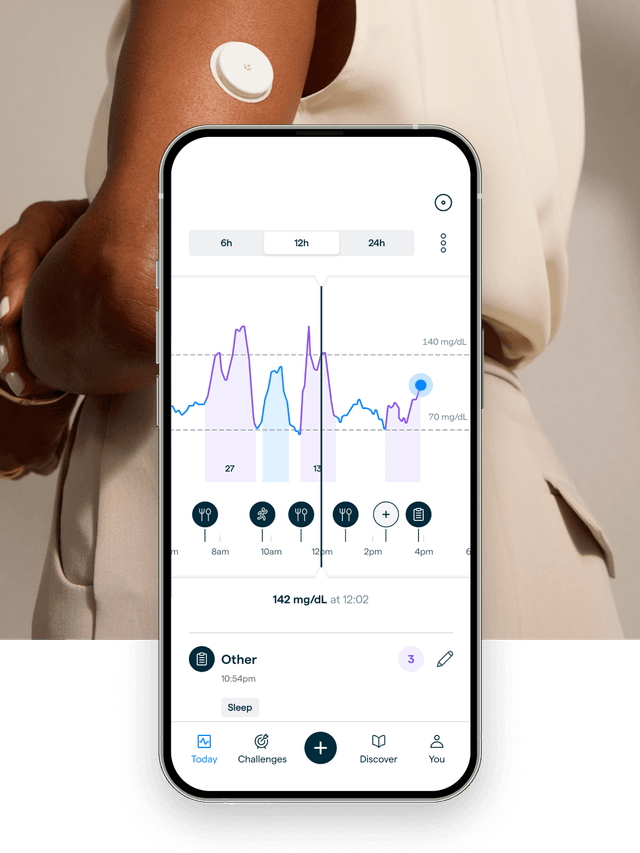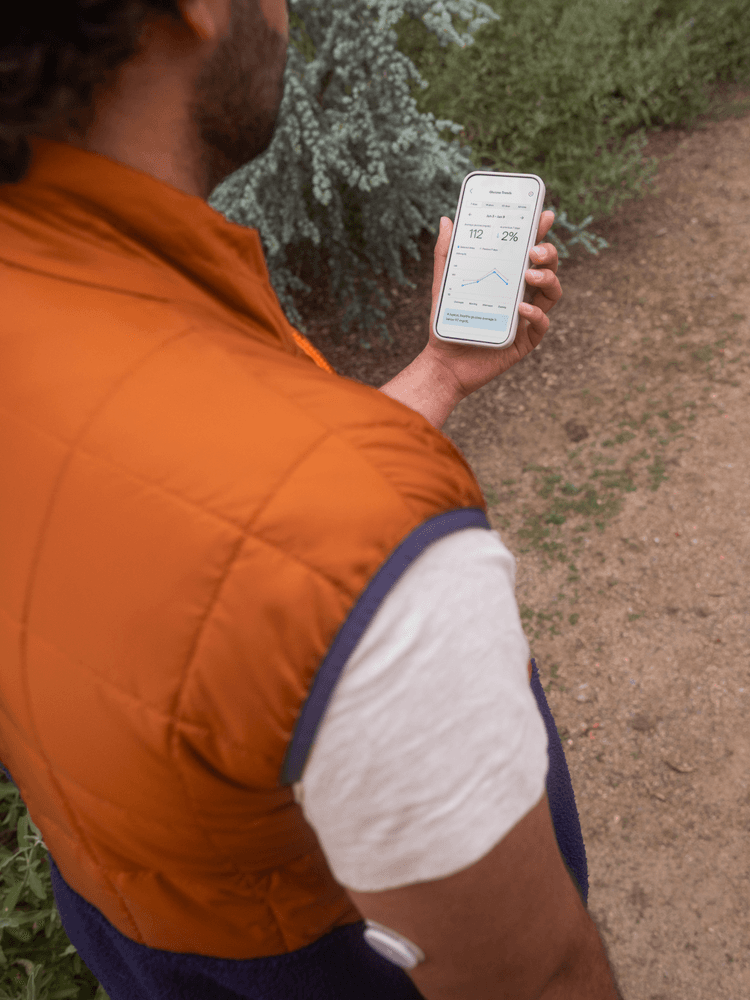Energy, hunger, focus, heart health — glucose and its impact are a lot to unpack. Lingo streamlines the science throughout your journey. So you not only learn what works, you also learn why.
Why glucose matters


Glucose is a fuel that provides energy to your cells. It goes up and down throughout the day, typically rising after meals with carbs, intense exercise, or even stress. But food tends to be the biggest driver.
As glucose rises (or spikes), your body releases insulin to get that fuel where it needs to go. Insulin helps your body use glucose for energy. When there’s more glucose than needed in your system, the excess glucose gets stored as glycogen or fat for later.1
Frequent and large ups and downs in glucose can also affect how you feel day to day — tired, hungry, moody, unable to concentrate.2 All things that can derail your health goals. And better glucose control over a lifetime can help reduce the risk of heart disease and type 2 diabetes.3,4 So, it’s important to learn which foods cause the biggest spikes for you and make changes that keep you steady.
Fuel better, feel better
Finding foods and habits that work for you and your routine has all kinds of benefits.
Feel more energized
Notice that 3pm crash? Could be your glucose. Clocking out early. Studies have shown that steady glucose may lead to better sleep, giving you the energy to power through the day.7,8 In turn, better sleep can also help to keep your glucose steady.9 The cycle is simple. Crash less. Boost energy. Repeat.
Reduce body fat
As glucose rises, so does insulin.10 And when insulin is chronically elevated, it can impair the body’s ability to burn fat for energy.11,12 That’s why having steady glucose levels can help reduce body fat.13
Refresh your focus
Brain fog isn’t your imagination. It’s your glucose with too many tabs open. When your glucose is steady more often, you can improve your mental clarity, focus, and memory.[14,17]
Protect your heart
What you eat matters for your glucose and your heart. Studies show that consistently high glucose levels (>140mg/dL) can increase the chance of heart disease risk.15 The TLDR: Keep your glucose in a healthy range† (70 - 140mg/dL). Your heart will thank you.
†A typical glucose range for healthy individuals is 70–140mg/dL. Fluctuations beyond 140 mg/dL or under 70 mg/dL may occur from time to time and are to be expected.
CGM is a powerful tool


No matter your health goals, keeping your glucose steady
is important. And one of the best ways to keep it in check
is to track it.
The Lingo biosensor is a continuous glucose monitor (CGM). And CGMs are a tool for feedback. They monitor your glucose in real time, allowing you to see the impact of what you eat. And seeing your data can be a major motivator when it comes to behavior change. Because once you see it, you can’t unsee it.
Research study
In a randomized controlled trial, participants were divided into two groups. Both groups were encouraged to exercise and follow a low-glycemic index diet. The only difference? One group used a CGM, allowing them to see how their glucose values responded to food and activity throughout the trial. After two months, the CGM group adhered more closely to the low-glycemic diet. On average, they lost more weight, more body fat, and had improved cholesterol and fasting glucose values — all key markers associated with better metabolic health.10
How a system like Lingo can help


Wearing a biosensor that streams your glucose data to your phone can give you insights into how your food and exercise choices impact your glucose. But this technology alone won’t change things. Getting the results you want takes habit-building, guidance, and a more tailored approach to fueling your body.
The Lingo app helps you translate your glucose data and maximize the insights your data can offer. It can be a source of feedback, accountability, and validation that what you’re doing is actually working.
Meet our scientific and clinical advisors
Our advisors, leading experts in medicine and technology, advance what's known of metabolic health and human performance, guide people to better health, and help Lingo build the future of continuous monitoring.
FAQs














